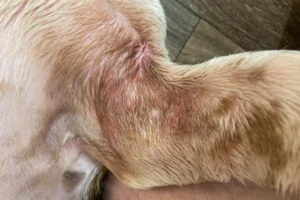Cat allergies are a common issue that affects many people. But have you ever wondered why cat allergies are so prevalent in the first place? Let’s delve into the reasons behind this widespread problem.
Genetics and Allergens
Did you know that genetics play a significant role in why cat allergies are so common? If one or both of your parents have allergies, you are more likely to develop them as well. This genetic predisposition can make you more sensitive to the allergens that cats produce, such as the protein Fel d 1 found in their saliva, skin, and urine. When these allergens come into contact with your immune system, it can trigger a reaction, leading to symptoms like sneezing, itching, and congestion.
Additionally, the specific proteins found in cat dander can be especially potent allergens for some individuals. These proteins are lightweight and easily airborne, making them easy to inhale and come into contact with. This can make living with a cat particularly challenging for those with sensitivities to these allergens.
Indoor Living Conditions
Indoor living conditions can also contribute to the prevalence of cat allergies. When cats shed their fur, they also shed dander, which contains allergens that can accumulate in the home. Dust mites, mold spores, and other allergens can also build up in indoor environments, exacerbating allergic reactions in sensitive individuals.
To minimize the impact of indoor allergens, it’s essential to regularly clean and vacuum your home, including upholstered furniture, carpets, and curtains. Investing in an air purifier can also help remove allergens from the air, reducing your exposure to potential triggers. Additionally, creating cat-free zones in your home can provide a safe space for individuals who are more sensitive to allergens.
Tips to Manage Indoor Allergens:
- Wash your cat’s bedding and toys regularly to reduce the buildup of dander.
- Use a HEPA filter vacuum cleaner to effectively capture allergens.
- Consider replacing carpeting with hardwood floors, which are easier to clean and less likely to trap allergens.
Immune System Sensitivity
An overactive or sensitive immune system can trigger allergic reactions to cats. When someone with a hypersensitive immune system comes into contact with cat dander (proteins found in a cat’s skin, saliva, and urine), their body mistakenly identifies it as a harmful substance, leading to the release of histamines and other chemicals that cause symptoms like sneezing, runny nose, and itchy eyes.
Individuals with a family history of allergies or asthma may be more prone to developing cat allergies. This genetic predisposition can significantly increase the likelihood of having a hyperactive immune response to cat dander.
Unique insight: Interestingly, research suggests that early exposure to cats during childhood may reduce the risk of developing cat allergies later in life. This phenomenon, known as the “hygiene hypothesis,” proposes that early exposure to allergens can help train the immune system to tolerate them, decreasing the likelihood of developing allergies.
Cross-Reactivity with Other Allergies
Individuals with existing allergies, such as pollen or dust mite allergies, may be more susceptible to developing cat allergies due to cross-reactivity. This means that the proteins in cat dander can be similar to those found in other allergens, triggering a response in individuals already sensitive to those substances.
Moreover, individuals with allergic sensitivities to multiple allergens may experience more severe reactions when exposed to cats. This cross-reactivity can exacerbate symptoms and make it challenging to distinguish between different allergy triggers.
To reduce the risk of cross-reactivity and allergy symptoms, it’s essential to manage existing allergies effectively. Allergy medications, regular cleaning to reduce allergen exposure, and consulting with an allergist for personalized treatment options can help alleviate symptoms and improve overall quality of life.
Lack of Exposure
Limited exposure to cats during childhood may increase the likelihood of developing allergies to them later in life. When children interact with cats early on, their immune systems have the opportunity to build tolerance to cat allergens. However, if individuals are not around cats frequently during their formative years, their immune systems may identify cat dander as a threat, leading to allergic reactions in adulthood.
Additionally, growing up in a sanitized environment with limited exposure to various allergens can make individuals more susceptible to developing allergies later in life. This lack of exposure early on may result in the immune system overreacting to harmless substances like cat dander, leading to allergic symptoms.
To minimize the risk of developing cat allergies, especially for children, consider introducing them to cats in a controlled environment from a young age. This exposure can help their immune systems learn to recognize and tolerate cat allergens, reducing the likelihood of developing allergies in the future.
Breeds and Allergenicity
Contrary to popular belief, there is no truly hypoallergenic cat breed. However, some cat breeds may produce fewer allergens or be less likely to trigger allergic reactions in certain individuals. The allergenicity of a cat breed is related to the proteins present in their saliva, urine, and dander, rather than the length or type of fur.
Certain cat breeds, such as the Siberian, Balinese, and Russian Blue, are often considered less allergenic due to lower production of the Fel d 1 protein, a common allergen found in cat saliva. However, individual reactions can vary, and someone may still experience allergies when exposed to these breeds.
When choosing a cat as a pet, it’s essential to spend time with different breeds to see how your body reacts. Regular grooming and cleaning can also help reduce allergen levels in the home, regardless of the cat’s breed. Remember, no cat is entirely allergen-free, so it’s crucial to manage allergies through proper care and maintenance.
Tips for Managing Cat Allergies:
- Regular Grooming: Brush your cat regularly to reduce shedding and dander.
- Frequent Cleaning: Vacuum and dust your home often to minimize allergen buildup.
- Air Purification: Consider using an air purifier with a HEPA filter to capture airborne allergens.
- Designated Cat-Free Areas: Create cat-free zones in your home, like bedrooms, to minimize exposure.
- Consult a Doctor: If allergies persist, seek advice from an allergist for personalized recommendations.
- Medication: Over-the-counter or prescription allergy medications can help manage symptoms.
Managing Cat Allergies
Cat allergies are a common issue due to a protein found in a cat’s saliva, urine, and dander that can trigger allergic reactions in sensitive individuals. To manage cat allergies effectively, consider the following tips:
- Create Allergen-Free Zones: Designate certain areas of your home as off-limits to your feline friend to minimize exposure to allergens.
- Use Air Purifiers: Invest in HEPA air purifiers to help filter out allergens from the air, creating a cleaner environment.
- Grooming and Cleaning: Regular grooming of your cat and frequent cleaning of your home can reduce the amount of allergens present.
- Medications: Consult with your healthcare provider about the use of antihistamines and other allergy medications to alleviate symptoms.
Alternative Pets for Allergy Sufferers
If cat allergies remain a significant issue, there are alternative pets that may be better suited for individuals with allergies. Consider the following options for animal companionship without the allergic reactions:
- Fish: Low-maintenance and hypoallergenic, fish can provide a soothing presence in your home without triggering allergies.
- Reptiles: Animals like turtles or snakes can be suitable alternatives for allergy sufferers, as they do not produce dander that can cause reactions.
- Hypoallergenic Breeds: Some dog breeds are considered hypoallergenic and may be tolerated better by individuals with allergies.
Remember, each person’s allergy sensitivity varies, so it’s essential to consider your specific needs and limitations when choosing a pet.
Fun Facts About Cat Allergies
Did you know that cat allergies are not actually caused by cat hair, but rather by proteins found in a cat’s skin, saliva, and urine? These proteins can trigger allergic reactions in some people, leading to symptoms like sneezing, itching, and watery eyes. So, it’s not always the fluffy fur that’s to blame!
If you’re a cat lover, you might be interested to learn that certain cat breeds are known to produce fewer allergens. Breeds like the Sphynx, Balinese, and Russian Blue are considered hypoallergenic due to their lower levels of allergenic proteins. So, if you suffer from cat allergies but can’t resist a feline companion, these breeds might be a good option for you.
Here’s a fun fact to impress your friends: approximately 10% of the population is allergic to cats! That’s a surprisingly high number, considering how popular these furry creatures are as pets. The widespread prevalence of cat allergies can be attributed to the potent allergens they produce, making it challenging for many people to coexist with these lovable animals.
Remember, if you suspect you have cat allergies, it’s essential to consult with a healthcare professional for proper diagnosis and treatment. Don’t let allergies come between you and your favorite feline friend—there are ways to manage your symptoms and still enjoy the company of cats.
Alex, a passionate animal lover, has experience in training and understanding animal behavior. As a proud pet parent to two dogs and three cats, he founded AnimalReport.net to share insights from animal experts and expand his knowledge of the animal kingdom.









